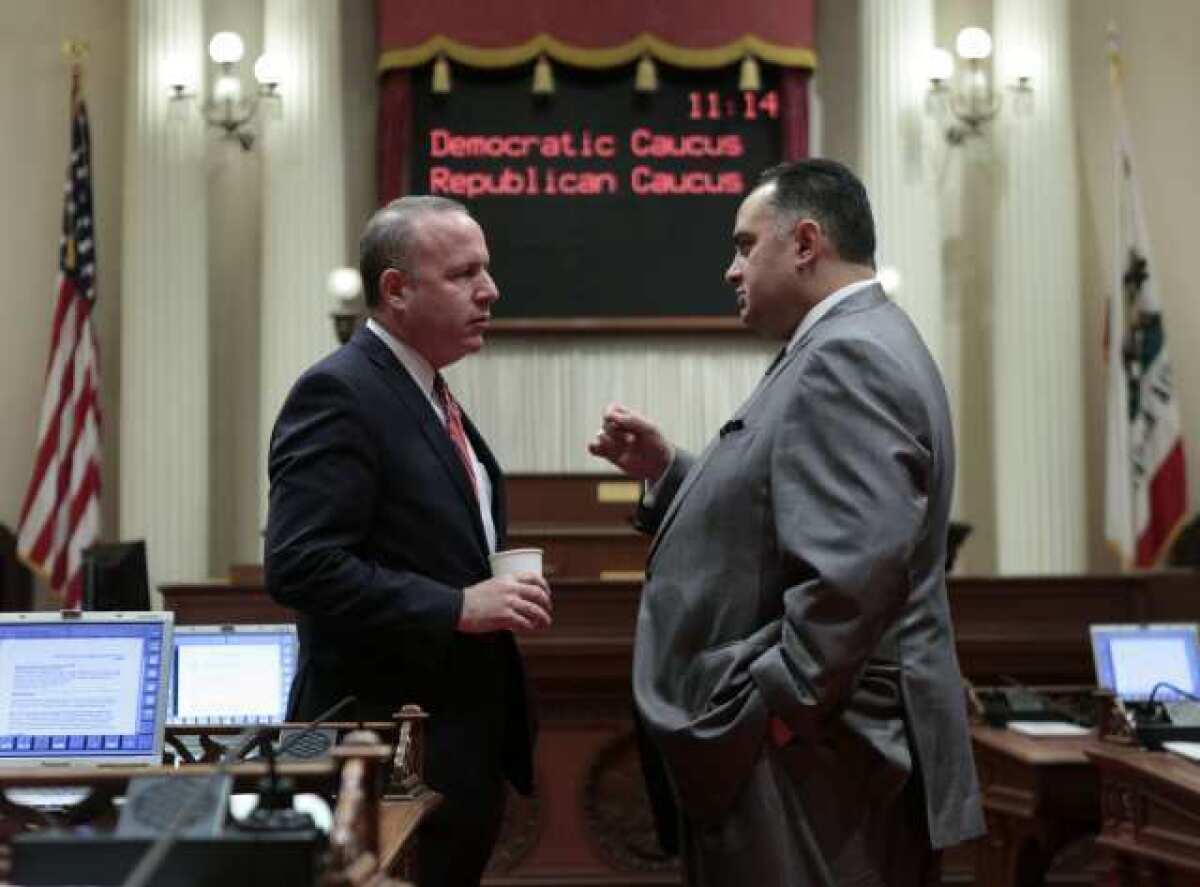Key provisions of the state budget agreement

- Share via
Gov. Jerry Brown and top Democratic lawmakers announced Thursday that they had reached a deal on state spending. Here are some key elements of the budget agreement:
Social services
Spending on welfare, child care and home care for the elderly and disabled would be reduced. There would be stricter requirements and time limits placed on welfare recipients, but those close to finishing job-training programs could get exemptions. Monthly welfare checks would not be reduced. State-supported child care would be sliced 8.7%. In-Home Supportive Services, which allow some elderly and disabled residents to avoid being moved into nursing homes, would be reduced by about $90 million. That cut means beneficiaries would receive 3.6% fewer hours of care.
Health programs
The budget includes more than $1 billion in cuts to Medi-Cal — the insurance program for the poor — and other state health programs. The bulk of the savings, $663 million, would come from a plan to move 1.4 million low-income seniors and people with disabilities who receive benefits from both Medicare and Medi-Cal into managed care. The budget also is banking on an improving economy to lower the state’s healthcare costs. It assumes hundreds of thousands of people will go off Medi-Cal as they or family members return to work. Since 2008, Medi-Cal rolls have swelled to nearly 8 million people, up from about 6 million before the recession began. The budget also includes about $88 million in reduced reimbursements to private hospitals and nursing homes. Although the federal government has rejected most of the Brown administration’s requests to have the poor pay a share of their healthcare costs, the budget does include patient co-pays for a few services, including non-emergency visits to an emergency room and certain prescription drugs. It also calls for poor patients with AIDS to pay more for their medication. Lastly, the budget phases out the Healthy Families program for children, shifting them into Medi-Cal.
Prisons and courts
To save billions over the next few years, officials want to close a prison, end contracts with private out-of-state facilities and cancel some construction projects. They also plan to shift staff to reduce costs, hold inmates in less expensive housing and continue sending low-level offenders to county jails instead of state prisons.
As for the state court system, the budget would slice $300 million from the trial courts. Up to 38 construction projects would be halted because of an additional $240 million in cuts. California Supreme Court Chief Justice Tani Cantil-Sakauye has said the cuts could lead to more courtroom closures, depriving residents of access to the judicial system.
State workers
The budget aims to cut compensation for 182,000 state workers by 5%, saving $402 million. That includes nurses, engineers, administrative workers and Highway Patrol officers. Brown has pledged to negotiate the cuts with public employee unions, and so far has reached agreements with six of the 21 bargaining units that represent state workers.
Education
The governor and lawmakers have opted to leave the financial fate of the state’s public schools, community colleges and universities in the hands of voters. Brown hopes to place an initiative on the November ballot that would hike sales taxes and upper-income taxes. The measure would raise $8 billion in the next budget year, according to administration figures, and leave schools relatively untouched by this year’s budget ax. If those taxes are rejected, a series of trigger cuts would go into effect, including a $5.5-billion reduction to public schools and community colleges. The trigger cuts include $250-million reductions each to the California State University and University of California systems. Education leaders say tuition increases would be likely if Brown’s initiative were rejected. Lawmakers also have proposed eliminating dozens of earmarks for specific programs within the state’s public K-12 system, deciding instead to send block grants from Sacramento.
State parks
To prevent dozens of state parks from closing July 1, lawmakers shifted money within the budget to keep natural and historic sites open to the public. The budget would increase park funding by tapping federal funds for water improvements and motor vehicle registration fees. It also encourages the state to collect entrance fees at more parks and seek additional contracts with private companies to operate things like concession stands.
— Chris Megerian and Anthony York
More to Read
Sign up for Essential California
The most important California stories and recommendations in your inbox every morning.
You may occasionally receive promotional content from the Los Angeles Times.










